Previous Day - Next Day

“The day may dawn when fair play, love for one's fellow men, respect for justice and freedom, will enable tormented generations to march forth triumphant from the hideous epoch in which we have to dwell. Meanwhile, never flinch, never weary, never despair.”
~ Winston Churchill
Wikiquote (Winston Churchill Sir Winston Leonard Spencer-Churchill, KG, OM, CH, TD, DL, FRS, Hon. RA (November 30, 1874 – January 24, 1965) was a British politician, best known for his leadership of the United Kingdom during the Second World War. Widely regarded as one of the greatest wartime leaders of the 20th century, he served as Prime Minister twice (1940–45 and 1951–55).)
● Never was so much owed by so many to so few - Winston Churchill Speeches, Youtube 
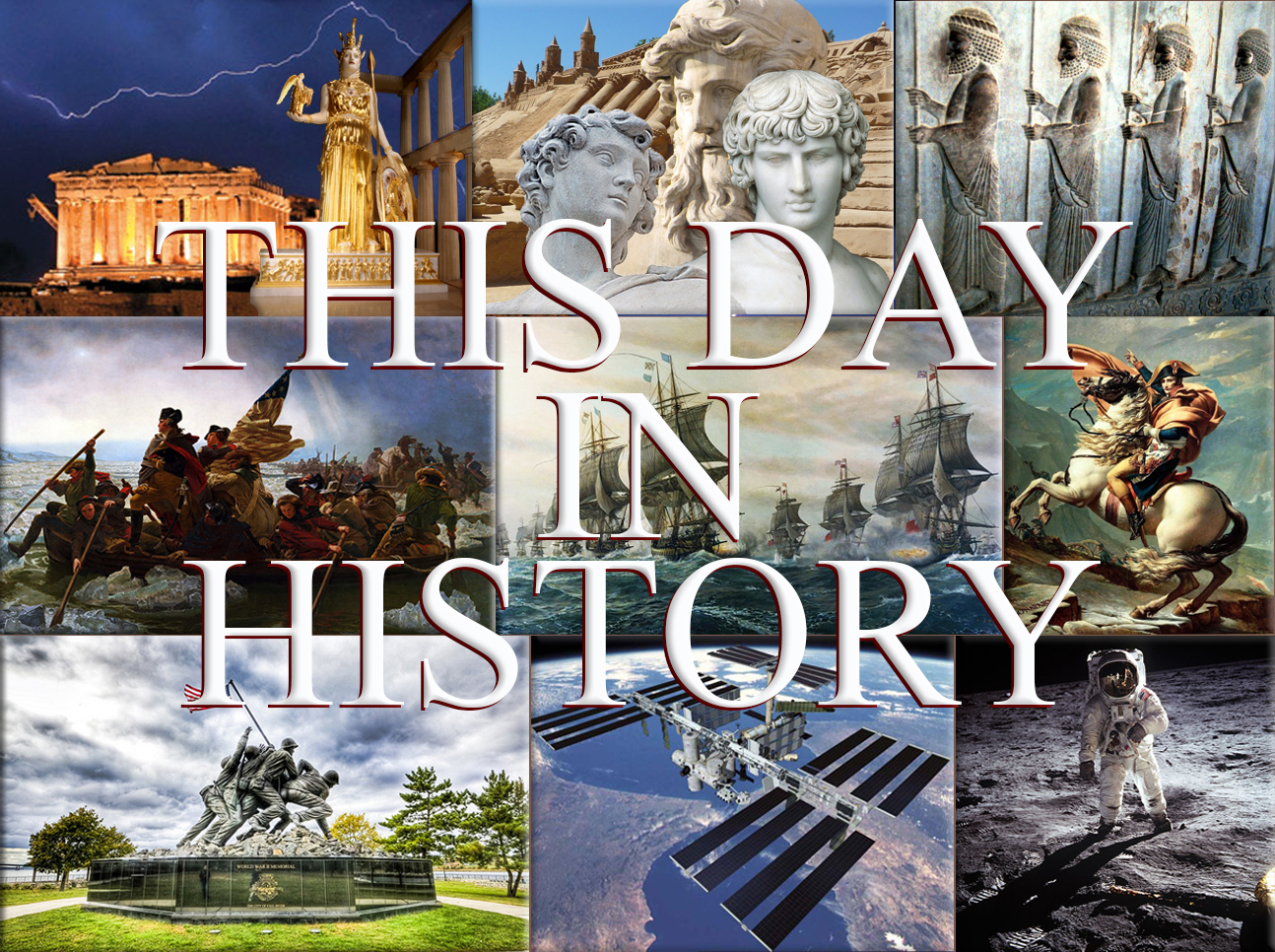
March 4th, 51
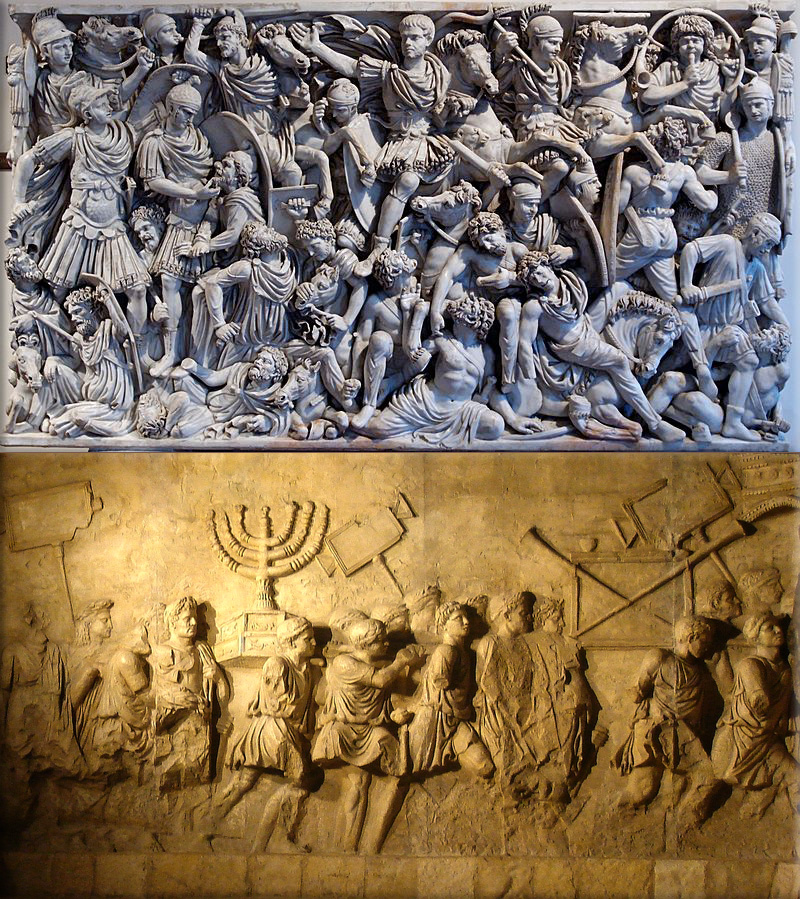
Roman Empire:
51 - Nero, later to become Roman Emperor, is given the title princeps iuventutis (head of the youth).
306 - Martyrdom of Saint Adrian of Nicomedia. (Adrian of Nicomedia was a Herculian Guard of the Roman Emperor Galerius Maximian. After becoming a convert to Christianity with his wife Natalia, Adrian was martyred at Nicomedia on March 4, 306.)
Wikipedia Image: Relief from a 3rd-century sarcophagus depicting a battle between Romans and Germanic warriors; the central figure is perhaps the emperor Hostilian / Depiction of the Menorah on the Arch of Titus in Rome.
March 4th, 852
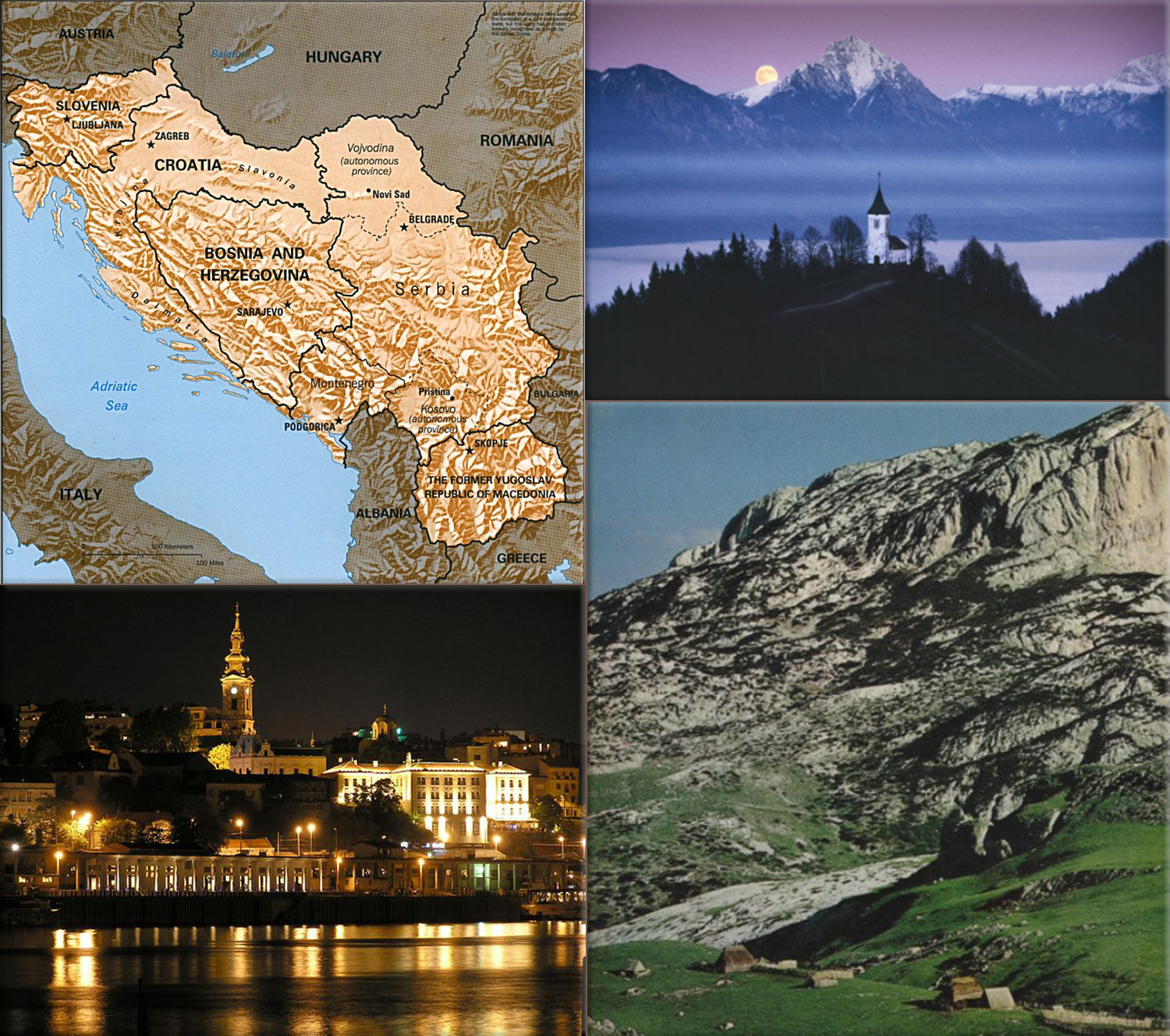
Croatian Duke Trpimir I issues a statute, a document with the first known written mention of the Croats name in Croatian sources.
Wikipedia Map: Kingdom of Yugoslavia; Belgrade, Yugoslavia; A twilight moon rises above the Kamniske mountains and Slovenia’s Sava River Valley, Slovenia, credit National Geographic; Yugoslavia, November 1977, credit National Geographic.
March 4th, 932
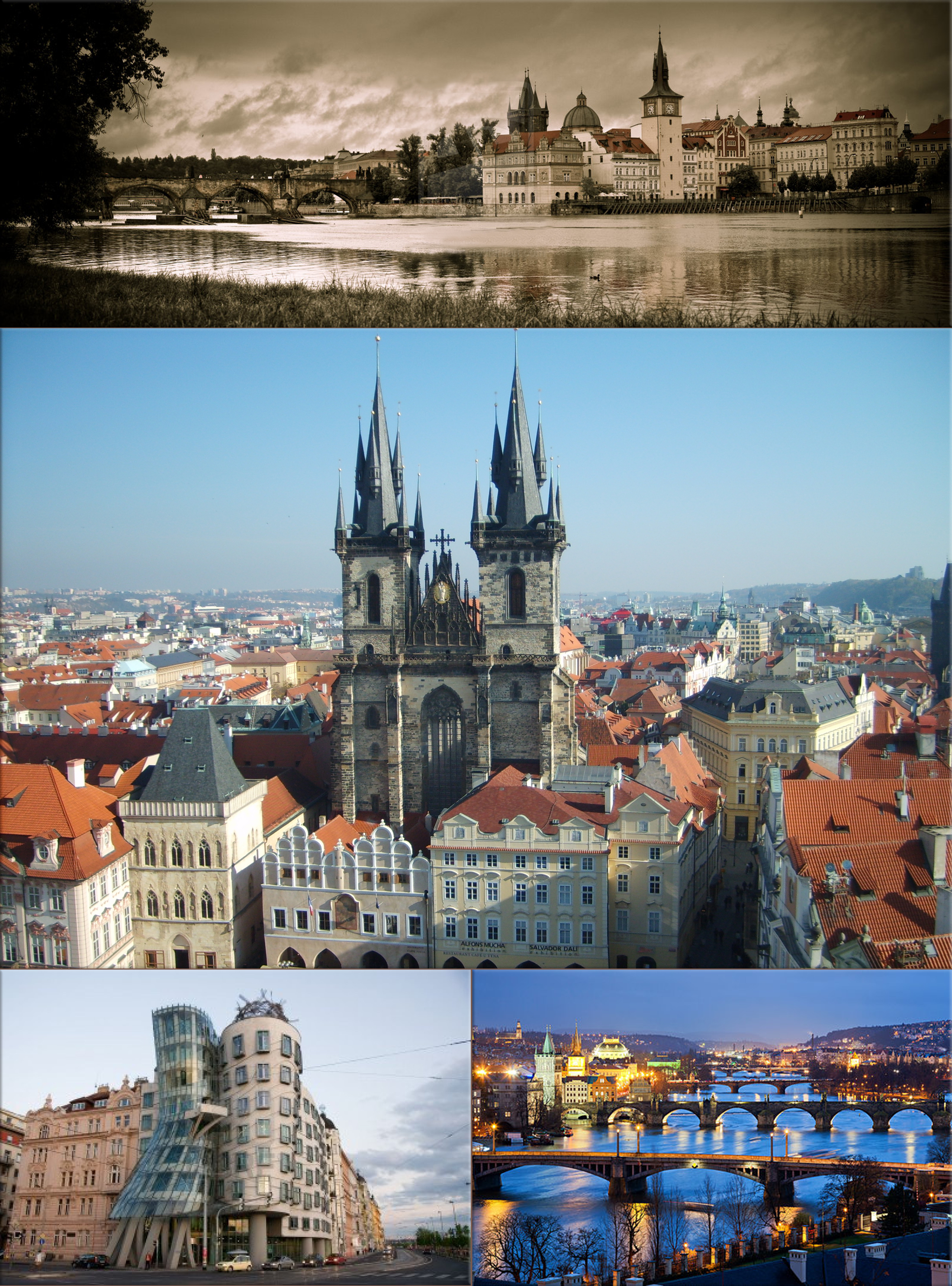
Translation of the relics of martyr Wenceslaus I, Duke of Bohemia, Prince of the Czechs.
Wikipedia Photo: Prague, Czech Republic, Strelecky Ostrov Prague ● Prague, Church Of Our Lady ● Dancing house building in downtown Prague ● Downtown Prague at night.
March 4th, 1152
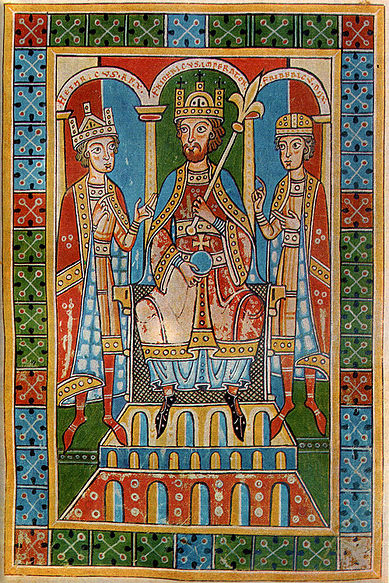
Frederick I Barbarossa is elected King of the Germans.
Wikipedia Image: Frederick I Barbarossa (Frederick I, Holy Roman Emperor) 1122 – 10 June 1190) was a German Holy Roman Emperor. (He was elected King of Germany at Frankfurt on 4 March 1152 and crowned in Aachen on 9 March as King of Italy in Pavia in 1155, and finally crowned Roman Emperor by Pope Adrian IV, on 18 June 1155.)
March 4th, 1238
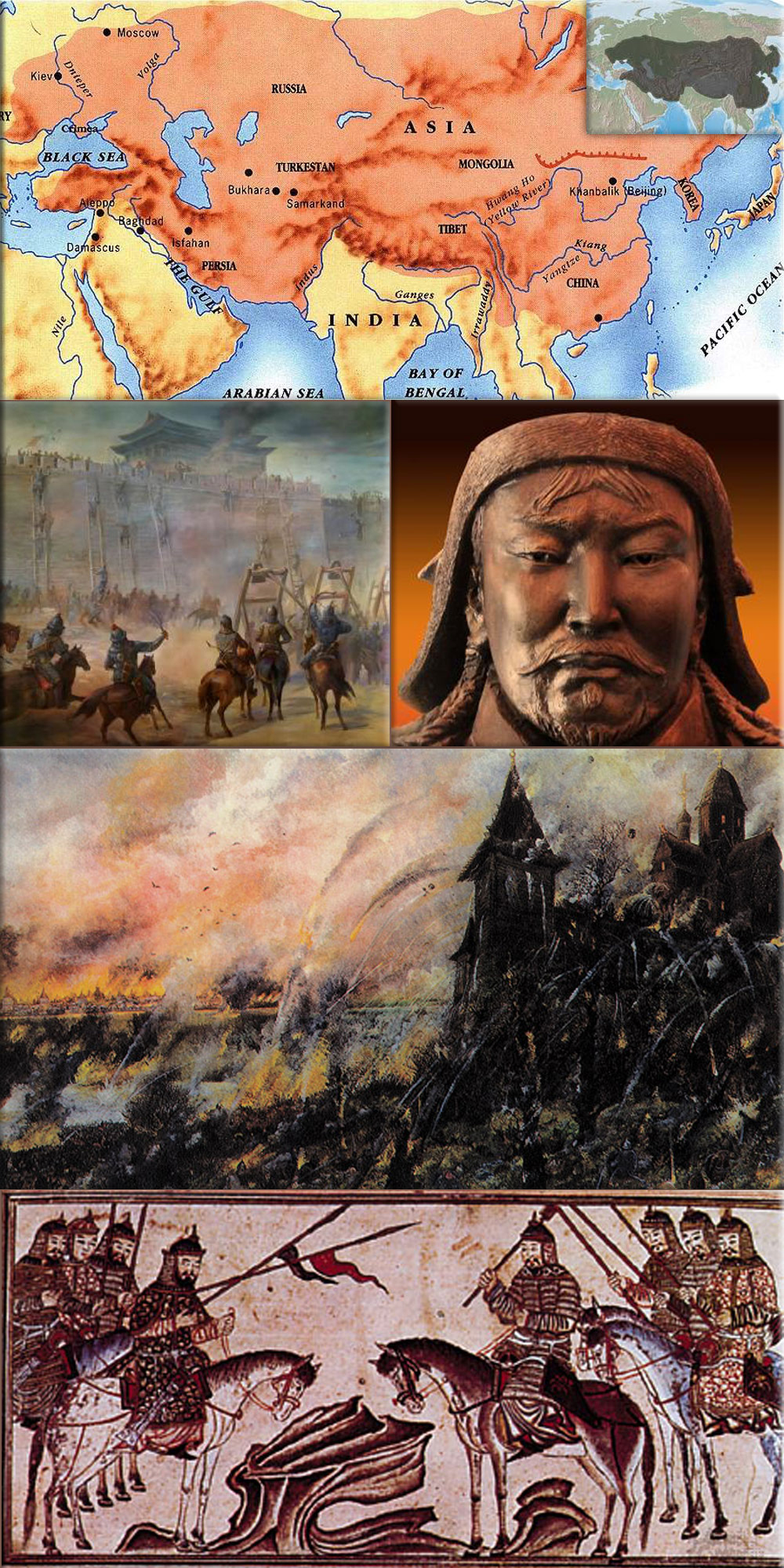
Mongol Empire:
1238 - Mongol invasion of Russia - Battle of the Sit River; is fought in the northern part of the present-day Yaroslavl Oblast of Russia between the Mongol Hordes of Batu Khan and the Russians under Yuri II of Vladimir-Suzdal.
Wikipedia Image: Map of Mongol Empire at its height; Genghis Khan, credit The Field Museum in Chicago; Genghis Khan various Mongolian tribes joined together in 1206; Mongol warriors was created for an Islamic history book, Rashid al-Din's History of the World of 1307, courtesy of the Edinburgh University Library, Scotland.
March 4th, 1351
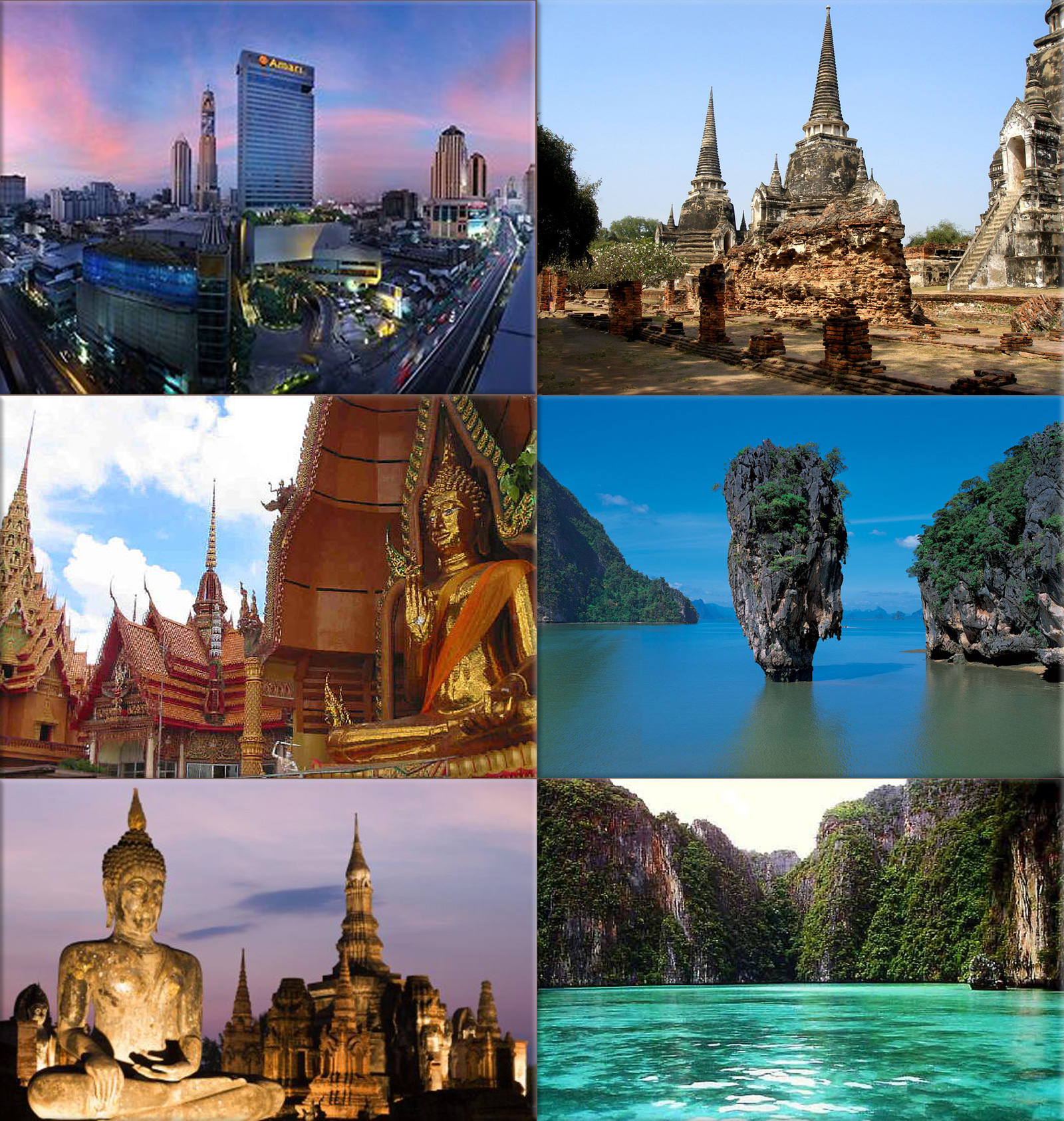
Ramathibodi becomes King of Siam.
Wikipedia Image: Thailand (officially the Kingdom of Thailand, formerly known as Siam) is a country located at the centre of the Indochina peninsula in Southeast Asia.
March 4th, 1386
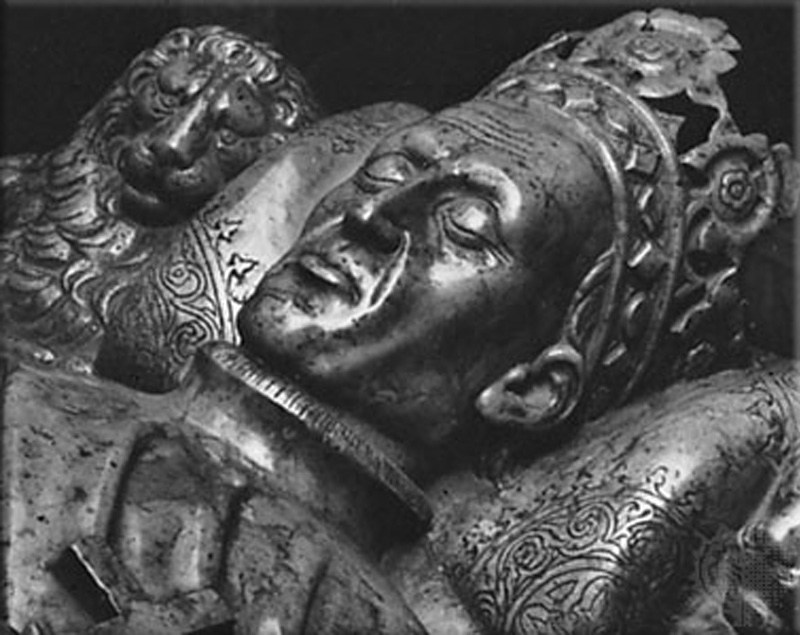
Władysław II Jagiełło (Jogaila) is crowned King of Poland.
Wikipedia Photo: Władysław II Jagiełło (Jogaila), Tomb effigy KWawel Cathedral Kraków.
March 4th, 1461
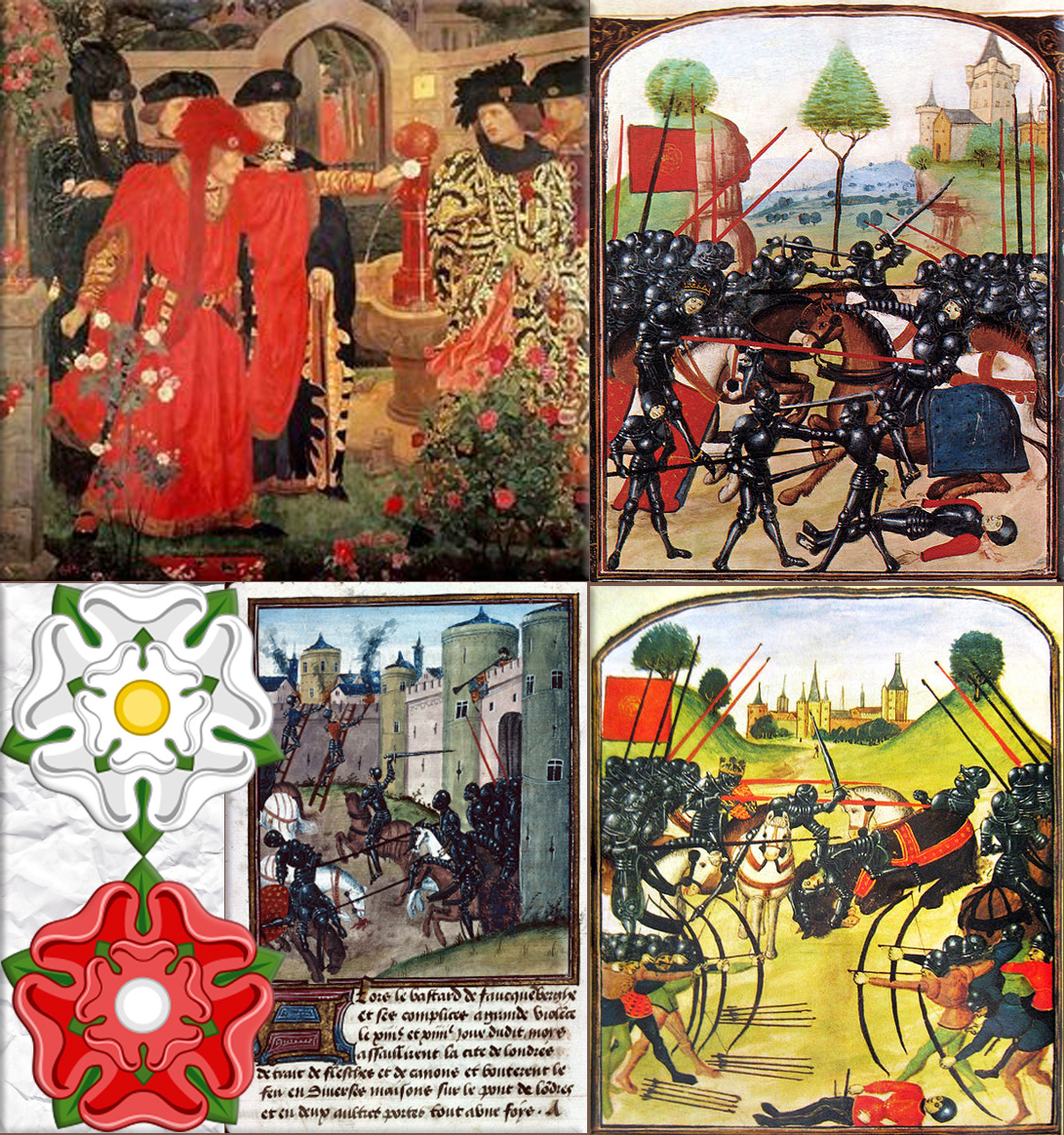
Wars of the Roses:
1461 - In England Lancastrian King Henry VI is deposed by his Yorkist cousin, who then becomes King Edward IV.
Wikipedia Image: Wars of the Roses; a series of dynastic wars fought between supporters of two rival branches of the royal House of Plantagenet: the houses of Lancaster and York (whose heraldic symbols were the "red" and the "white" rose, respectively) for the throne of England.
March 4th, 1493
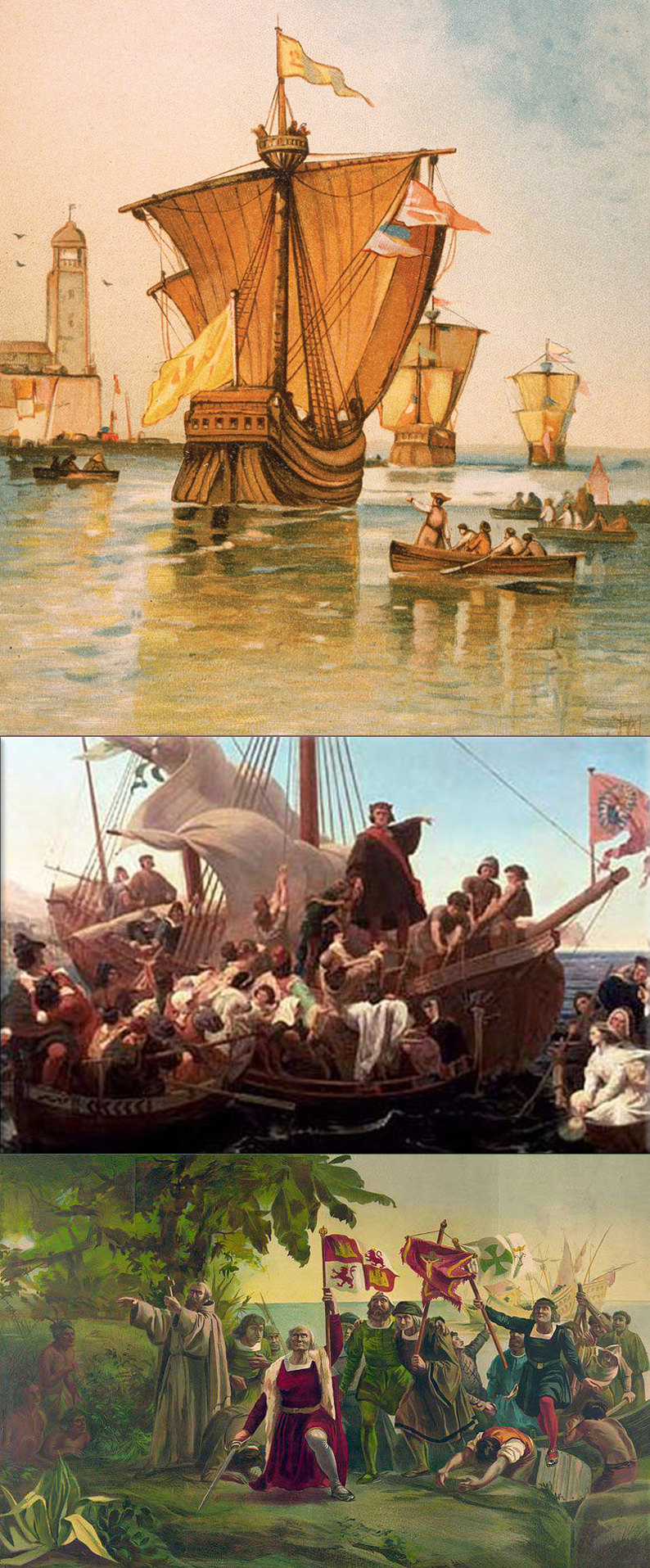
1493 - Christopher Columbus arrives back in Lisbon, Portugal, aboard his ship Niña from his voyage to what is now The Bahamas and other islands in the Caribbean.
Wikipedia Paintings: Christopher Columbus' fleet of three ships sets sail from Spain in 1492. credit Kean Collection / Hulton Archive / Getty Images; Christopher Columbus pointing to land in the New World; Romantic Painting of Christopher Columbus arriving to the Americas Primer desembarco de Cristóbal Colón en América, by Dióscoro Puebla 1862.
March 4th, 1519
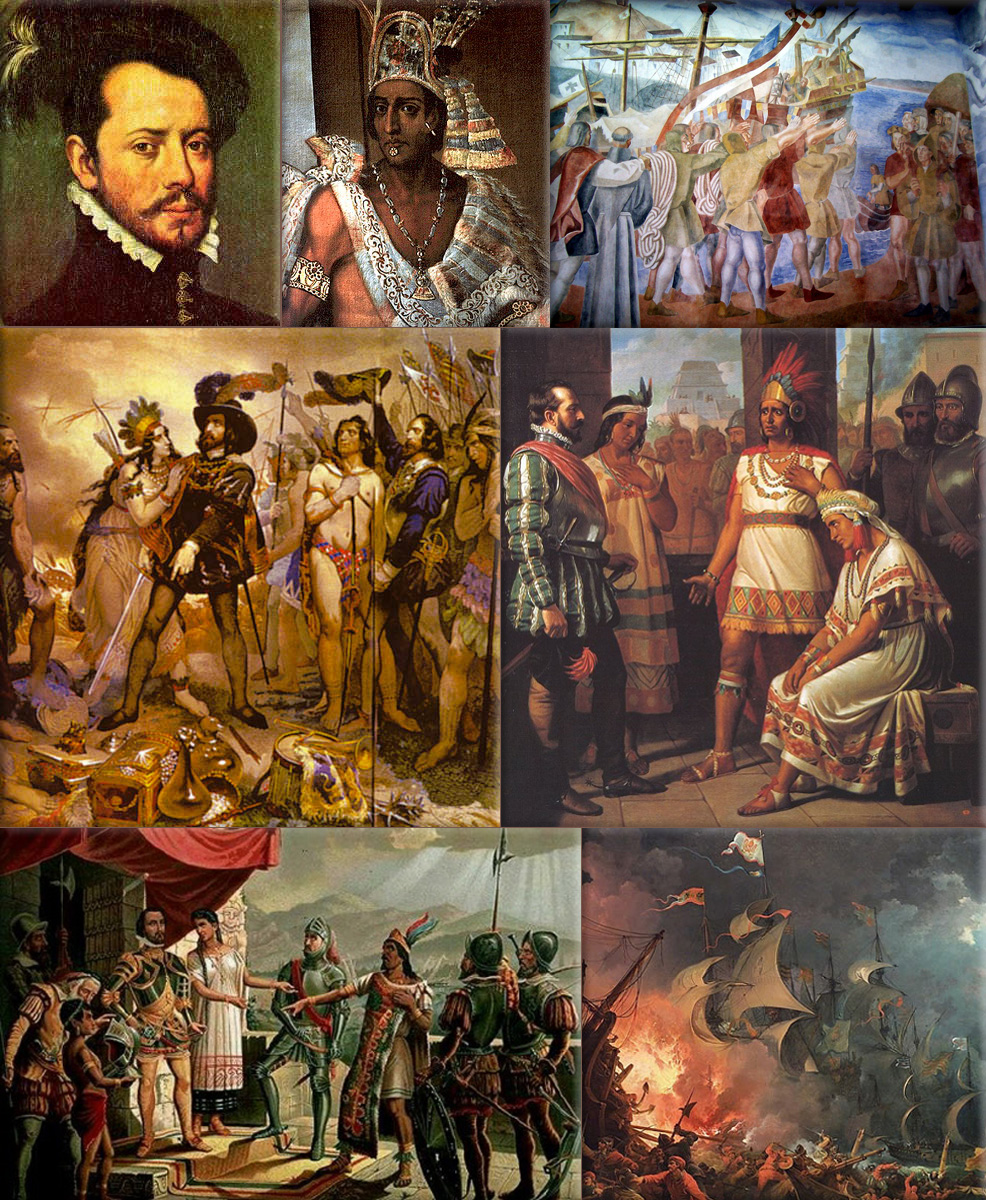
Hernán Cortés arrives in Mexico in search of the Aztec civilization and their wealth.
Wikipedia Painting: Hernán Cortés Collage; In the early 16th century, the Aztec Emperor Moctezuma II ruled from the city of Tenochitilan, situated in the location of present day Mexico City. His armies were feared by neighbouring states who paid tribute to the Aztecs and had hundreds of thousands of their citizens sacrificed in elaborate religious rituals to the Aztec gods. In scuttling the fleet, Cortés moved swiftly to squash mutineers. To make sure such a mutiny did not happen again, he decided to scuttle his ships, on the pretext that they were no longer seaworthy.
March 4th, 1628
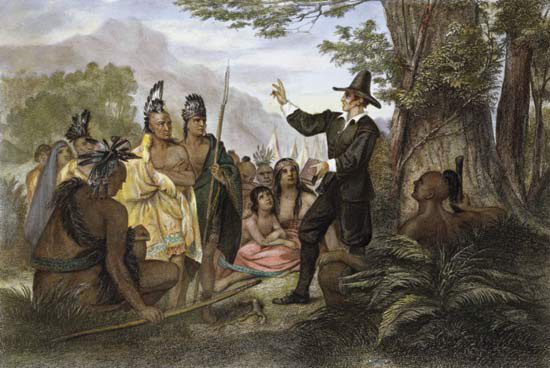
The Massachusetts Bay Colony is granted a Royal charter.
Wikipedia Painting: Massachusetts Bay Colony; John Eliot preaches to the Indians of the Massachusetts Bay Colony. The Granger Collection, New York
March 4th, 1665

Second Anglo-Dutch War: English King Charles II declares war on the Netherlands.
Wikipedia Painting: The Royal Prince and other vessels at the Four Days Fight, 11–14 June 1666 (Abraham Storck) depicts a battle of the Second Anglo–Dutch War.
March 4th, 1681
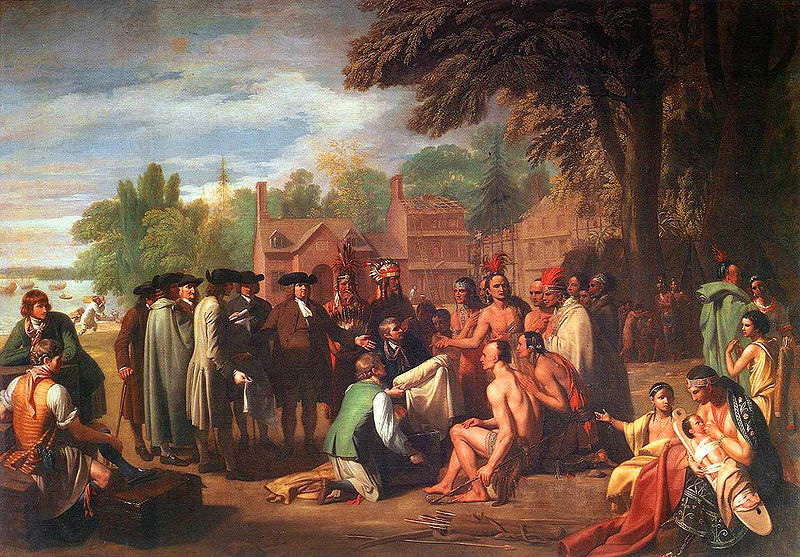
English King Charles II grants a land charter to William Penn for the area that will later become Pennsylvania.
Wikipedia Painting: William Penn's 1682 treaty with the Lenni Lenape, by Benjamin West.
March 4th, 1776
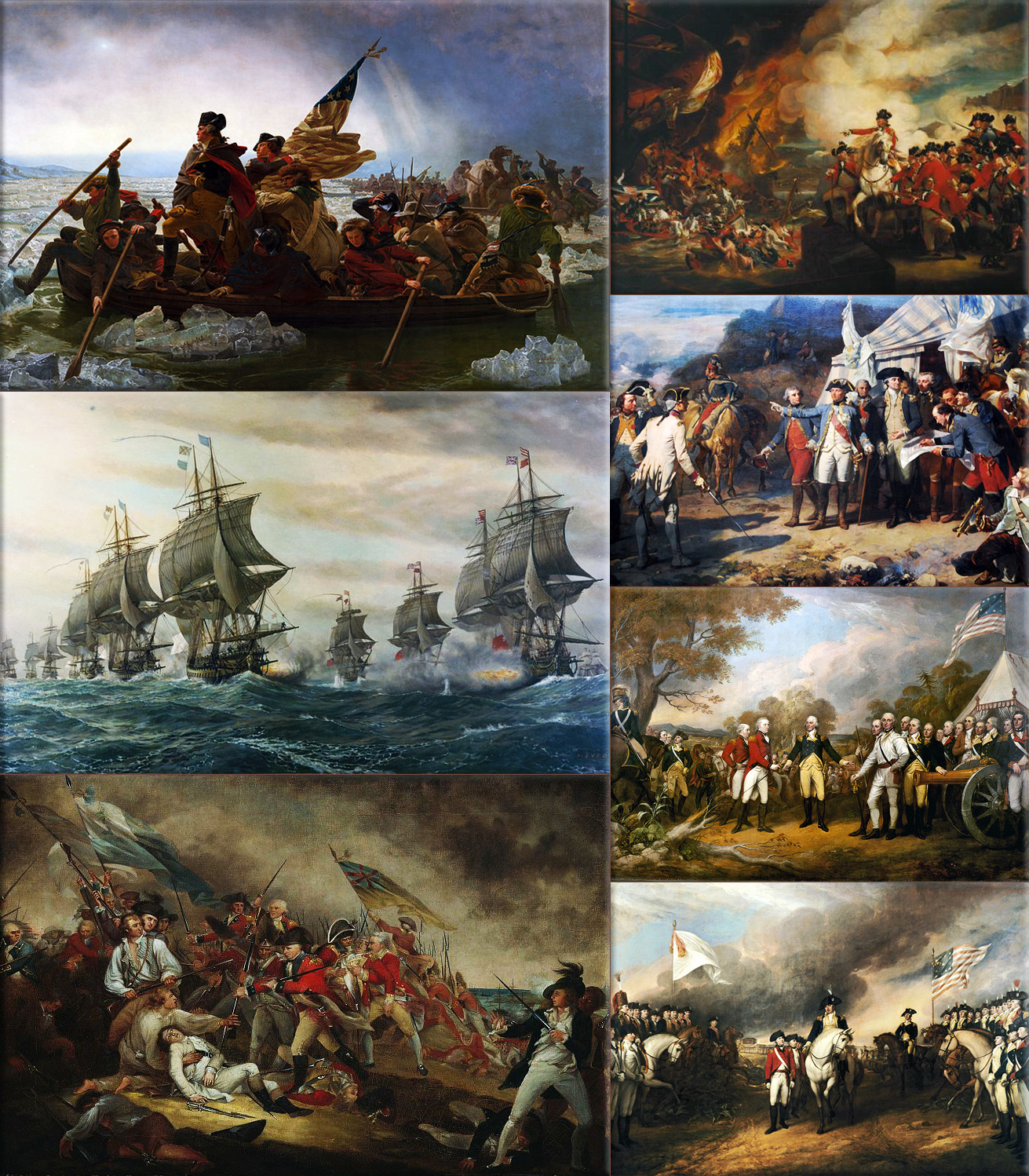
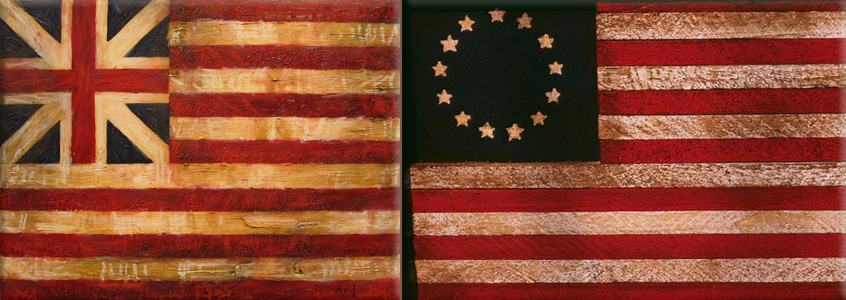
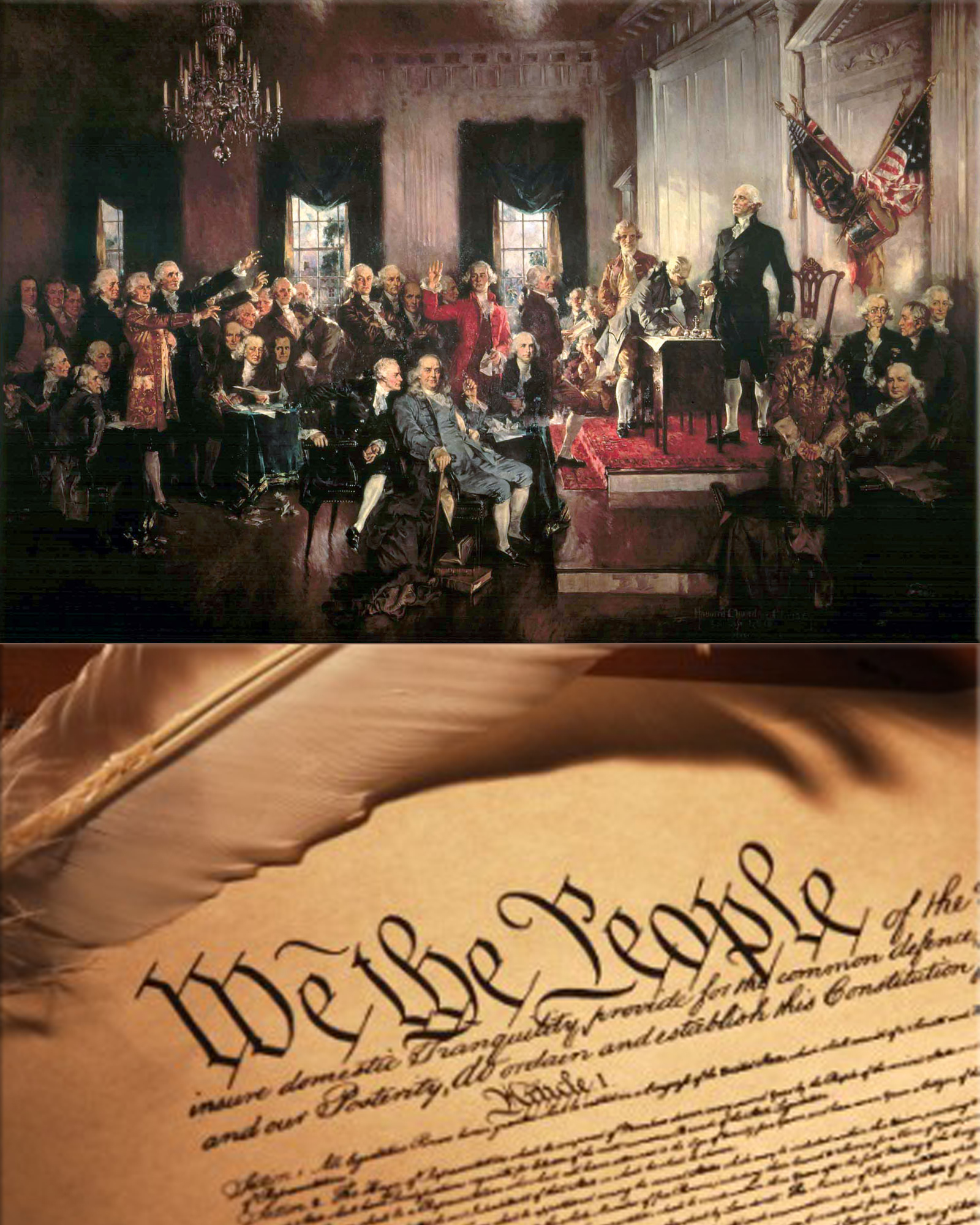
American Revolutionary War:
1776 - The Continental Army fortifies Dorchester Heights with cannon, leading the British to abandon the Siege of Boston.
1789 - In New York City, the first Congress of the United States meets, putting the United States Constitution into effect.
Wikipedia Paintings: Washington Crossing the Delaware, by Emanuel Leutz; Battle of the Chesapeake, French (left) and British (right) lines; Battle of Bunker Hill, The Death of General Warren at the Battle of Bunker Hill by John Trumbull; The Defeat of the Floating Batteries at Gibraltar, September 13, 1782, by John Singleton Copley; Washington and the Comte de Rochambeau at Yorktown, 1781; "The surrender at Saratoga" shows General Daniel Morgan in front of a French de Vallière 4-pounder; Surrender of Cornwallis at Yorktown by (John Trumbull, 1797).
Grand Union - Stars and Stripes Flag
Scene at the Signing of the Constitution of the United States, by Howard Chandler Christy
March 4th, 1790
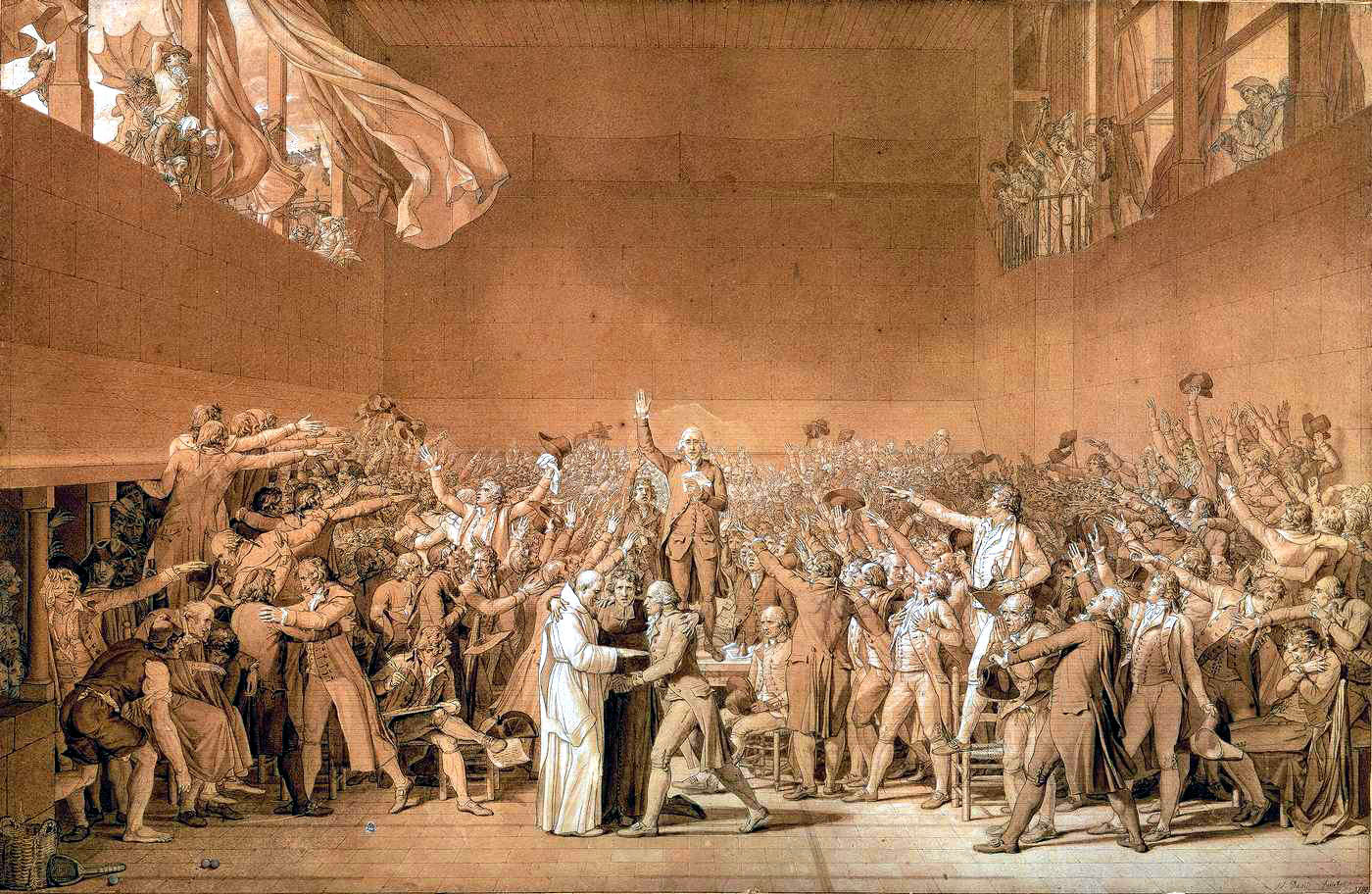
French Revolution: France is divided into 83 départements, cutting across the former provinces in an attempt to dislodge regional loyalties based on ownership of land by the nobility.
Wikipedia Painting: The National Assembly, by Jacques-Louis David.
March 4th, 1791
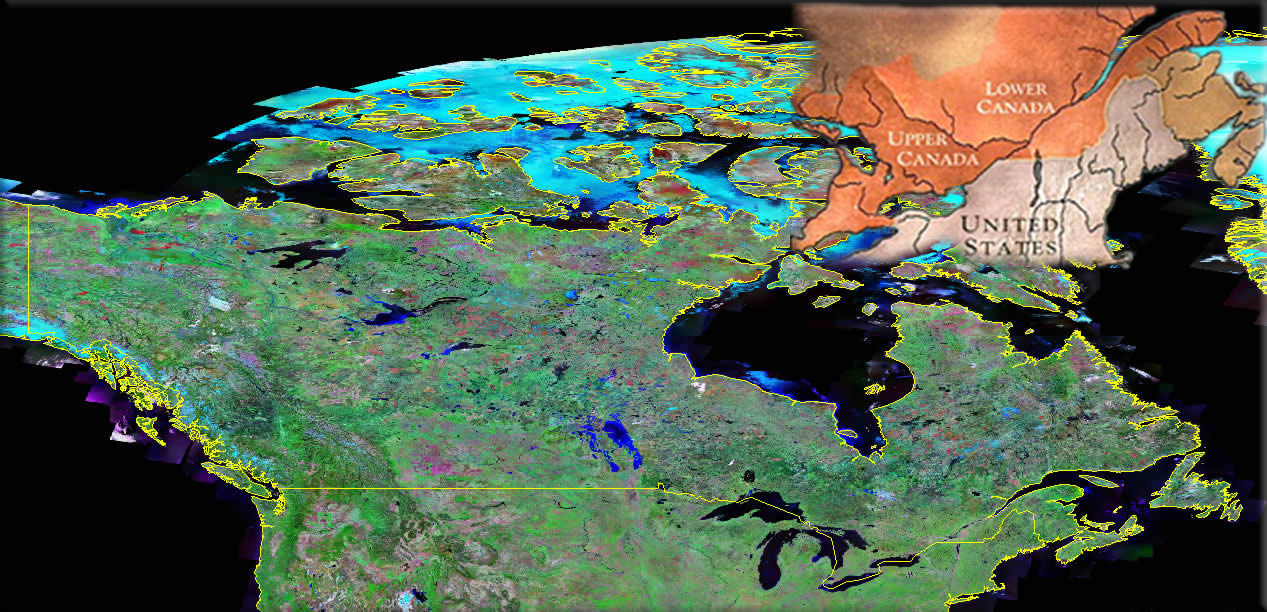
Constitutional Act of 1791: British House of Commons in London which envisages the separation of Canada into Lower Canada (Quebec and Upper Canada (Ontario).
Wikipedia Canada satellite image, @copy; Geology.com ● The creation of Upper and Lower Canada (1791)
March 4th, 1791

Vermont is admitted as the fourteenth U.S. state.
Wikipedia Image: Vermont is a state in the New England region of the northeastern United States.
March 4th, 1794

1794 - The Eleventh Amendment to the United States Constitution, deals with each state's sovereign immunity, is ratified.
Wikipedia Photo: United States Supreme Court building; Guardian of Law, by James Earle Fraser, US Supreme Court, Washington, DC, USA.
March 4th, 1797
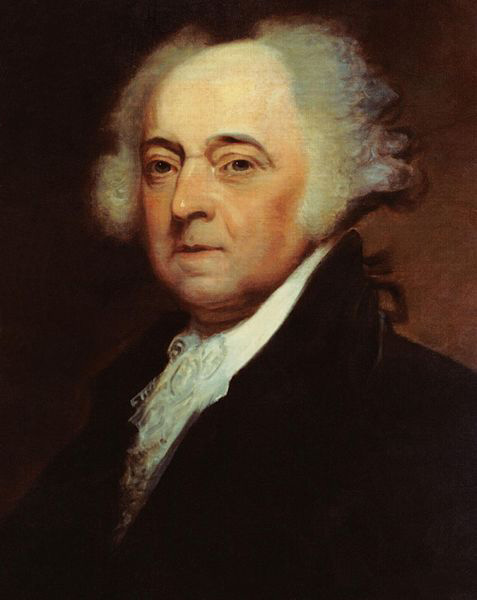
In the first ever peaceful transfer of power between elected leaders in modern times, John Adams is sworn in as President of the United States, succeeding George Washington.
Wikipedia Painting: John Adams (1735-1826), 2nd President of the United States, by Asher B. Durand (1767-1845).
March 4th, 1814
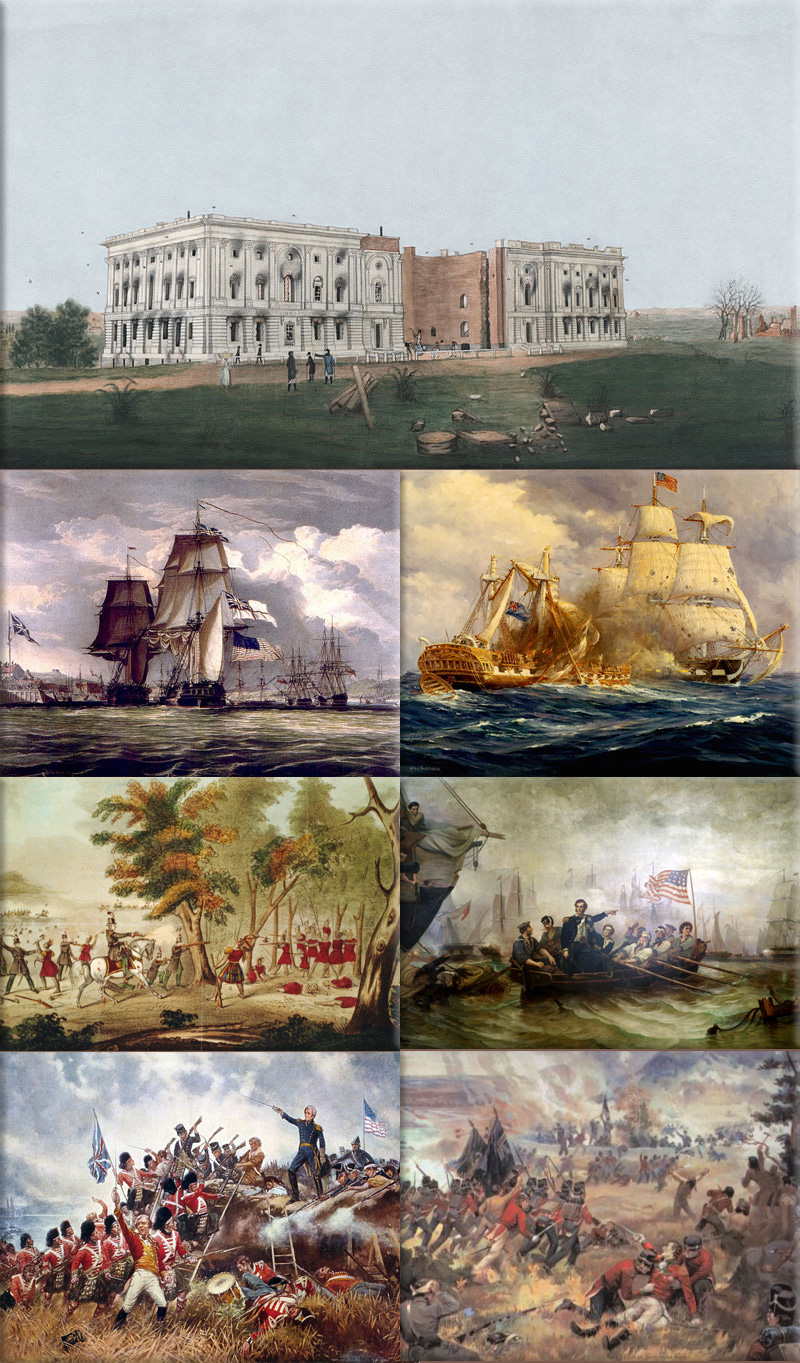
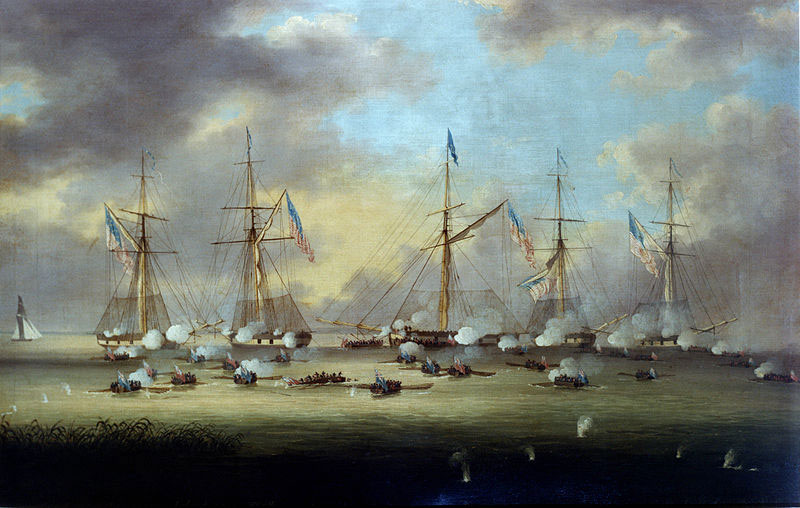
War of 1812:
1814 - The Battle of Longwoods; Americans defeat the British between London, Ontario and Thamesville, near present-day Wardsville, Ontario.
Wikipedia Painting: Damage to the US Capitol after the Burning of Washington; HMS Shannon leading the captured American frigate USS Chesapeake into Halifax, Nova Scotia (1813); USS Constitution vs HMS Guerriere; the death of Tecumseh at Moraviantown; Oliver Hazard Perry's message to William Henry Harrison after the Battle of Lake Erie began with what would become one of the most famous sentences in American military history: "We have met the enemy and they are ours; "Andrew Jackson leads the defence of New Orleans; The mortally wounded Isaac Brock spurs troops on at the Queenston Heights.
Battle of Lake Borgne, by Thomas Lyle Hornbrook.
March 4th, 1837
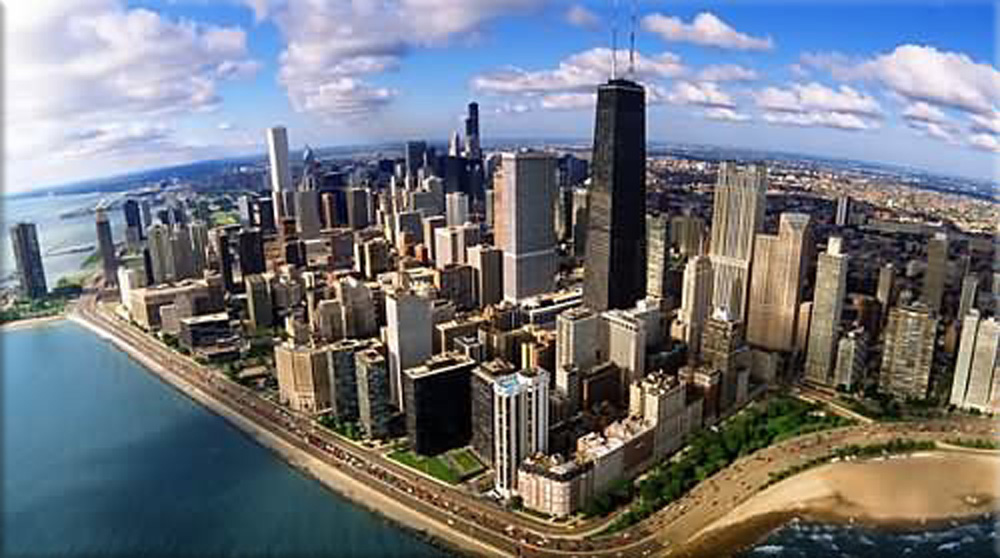
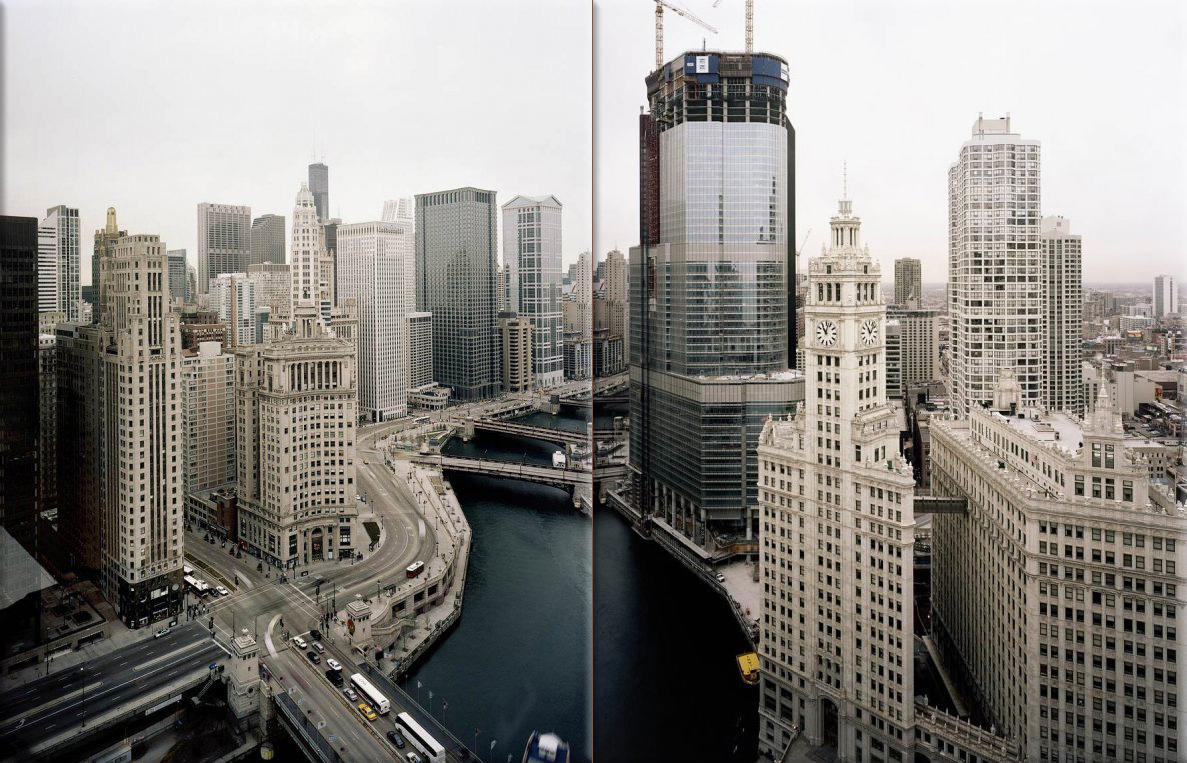
The city of Chicago is incorporated.
Wikipedia Photo: The city of Chicago architecture.
March 4th, 1861
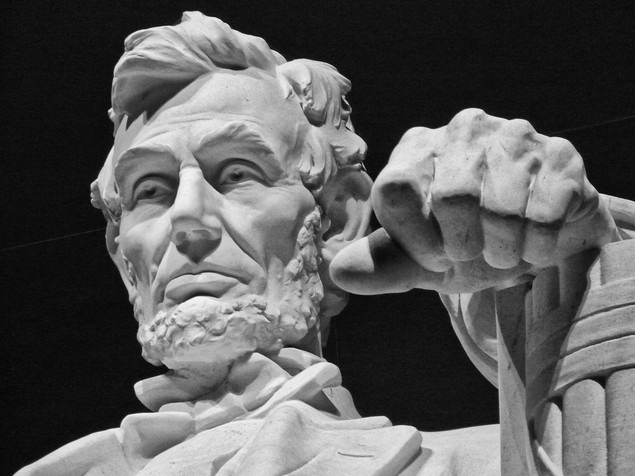
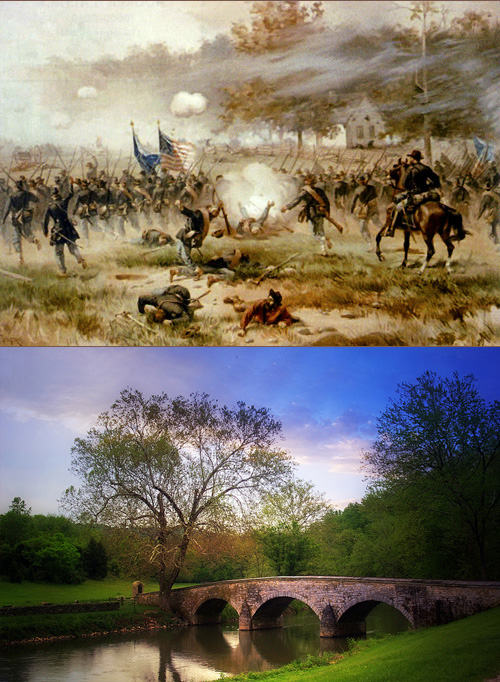
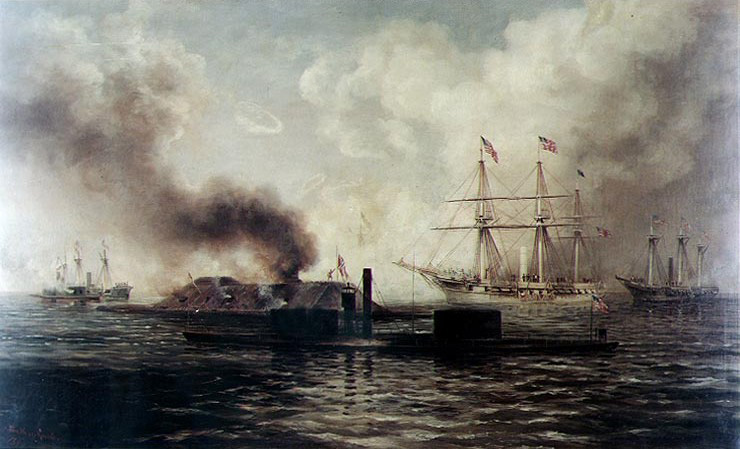
American Civil War:
1861 - The first national flag of the Confederate States of America (the "Stars and Bars") is adopted.
1865 - The third and final national flag of the Confederate States of America is adopted by the Confederate Congress.
Wikipedia Image: ● Lincoln Memorial; an American national monument built to honor the 16th President of the United States, Abraham Lincoln - located on the National Mall in Washington, D.C. across from the Washington Monument.
● The northern army led by George McClellan and the southern army led by Robert E. Lee met at Antietam Creek, Maryland in September, 1862. It was a bloody battle where 13,000 Confederates and 12,000 Union troops died in just one day. McClellan had hesitated to attack before the battle thus letting the southern troops regroup. Also, he had saved reserves and refused to use them at the end of the battle thinking that Lee was holding reserves for a counterattack, even though those reserves didn't exist. The Union victory stopped Lee's northward advance and was a turning point in the war.
● Battle of Antietam / Stone Bridge at Antietam Battlefield - Sharpsburg, Maryland
● Battle of Mobile Bay (1890) by Xanthus Russell Smith.
● Although photography was still in its infancy, war correspondents produced thousands of images, bringing the harsh realities of the frontlines to those on the home front in a new and visceral way. The Atlantic.
March 4th, 1882

Britain's first electric trams run in east London.
Wikipedia Digital Image: London Underground's Piccadilly Circus Station on the Great Northern, Piccadilly and Brompton Railway, credit Lenton Sands, Flickr.
March 4th, 1890
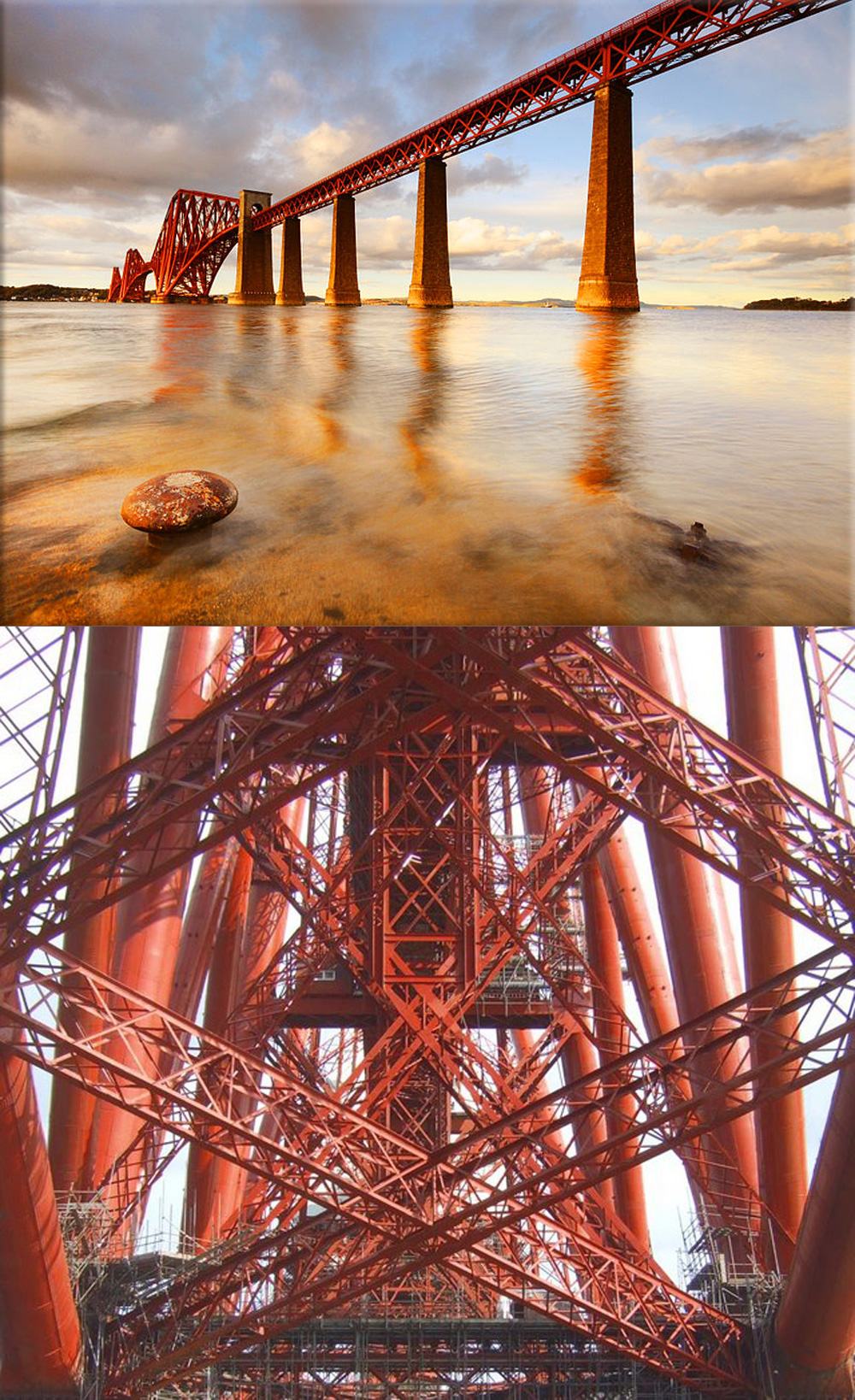
The longest bridge in Great Britain, the Forth Rail Bridge in Scotland, measuring 1,710 feet (520 m) long, is opened by the Prince of Wales, who later becomes King Edward VII.
Wikipedia Photo: The Forth Bridge is a cantilever railway bridge over the Firth of Forth in the east of Scotland, to the east of the Forth Road Bridge, and 14 kilometres (9 mi) west of central Edinburgh.
March 4th, 1899
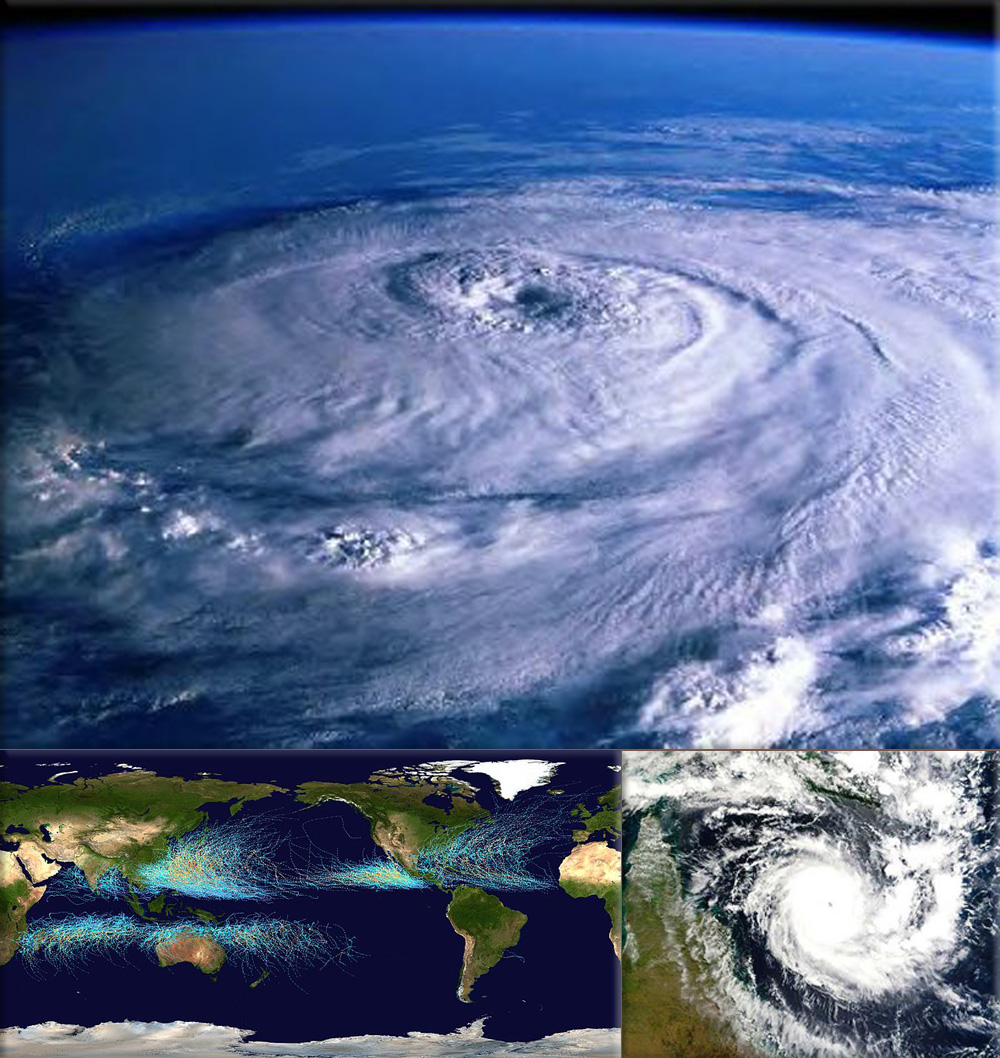
Cyclone:
1899 - Cyclone Mahina sweeps in north of Cooktown, Queensland, with a 12 metres (39 ft) wave that reaches up to 5 kilometres (3.1 mi) inland, killing over 300.
Wikipedia Image: In meteorology, a cyclone is an area of closed, circular fluid motion rotating in the same direction as the Earth (This is usually characterized by inward spiraling winds that rotate counterclockwise in the Northern Hemisphere and clockwise in the Southern Hemisphere of the Earth) ● Emergency Management, Australian Government. ● Global tropical cyclone tracks. ● Emergency Information, Burdenkin Shire.
March 4th, 1908

Collinwood School Fire: Collinwood near Cleveland, Ohio, kills 174 people.
Wikipedia Photo: Collinwood School Fire; (Lake View School, Collinwood, Ohio as it appeared before March 4, 1908 ● Lake View School, Collinwood, Ohio the morning following the fire of March 4, 1908. 175 people lost their lives in the fire, making it the greatest loss of life in a fire of this type in a school in the United States to that date.)
March 4th, 1913

Pre World War I:
1913 - Balkan War; Battle of Bizani - The Greek army engages the Turks at Bizani resulting in victory two days later.
Wikipedia Photo: Trenches on the Western Front; a British Mark IV Tank crossing a trench; Royal Navy battleship HMS Irresistible sinking after striking a mine at the Battle of the Dardanelles; a Vickers machine gun crew with gas masks, and German Albatros D.III biplanes. National Archives and Records Administration.
March 4th, 1917

Jeannette Rankin of Montana becomes the first female member of the United States Congress
Wikipedia Photo: Jeannette Rankin, a Republican from Montana, entered the U.S. House of Representatives, the first woman ever elected to Congress. She served from 1917 to 1919 and again from 1941 to 1942; a pacifist, she was the only lawmaker to vote against U.S. entry into both world wars, credit Imow.org.
March 4th, 1918

1918 Flu Pandemic: The first case of Spanish flu occurs, the start of a devastating worldwide pandemic.
Wikipedia Photo: Soldiers from Fort Riley, Kansas ill with Spanish influenza at a hospital ward at Camp Funston.
March 4th, 1918

The USS Cyclops (AC-4) departs from Barbados and is never seen again, presumably lost with all hands in the Bermuda Triangle (Devil's Triangle).
Wikipedia Image: Flight 19; Artist's depiction of five TBM Avenger torpedo bombers that disappeared on December 5, 1945 during a United States Navy overwater navigation training flight from Naval Air Station Fort Lauderdale, Florida. credit © Lee Krystek.
March 4th, 1933
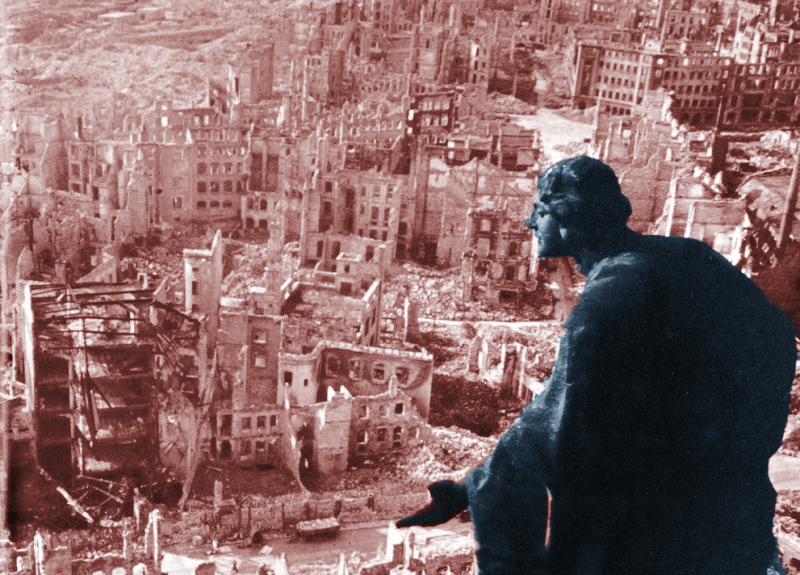

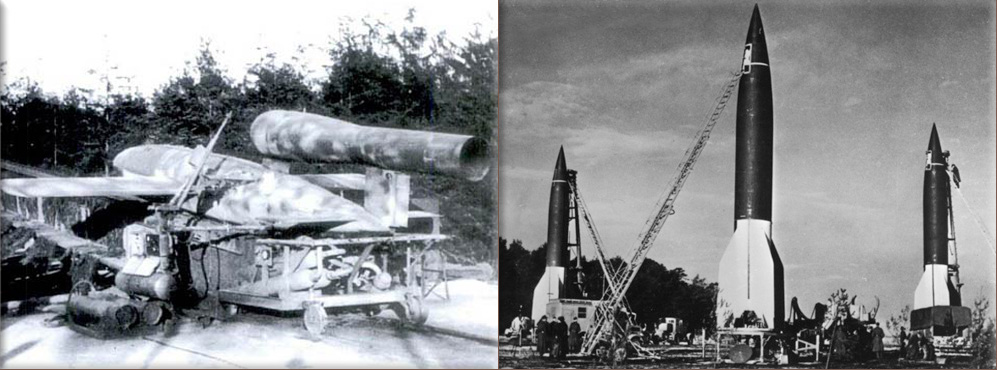
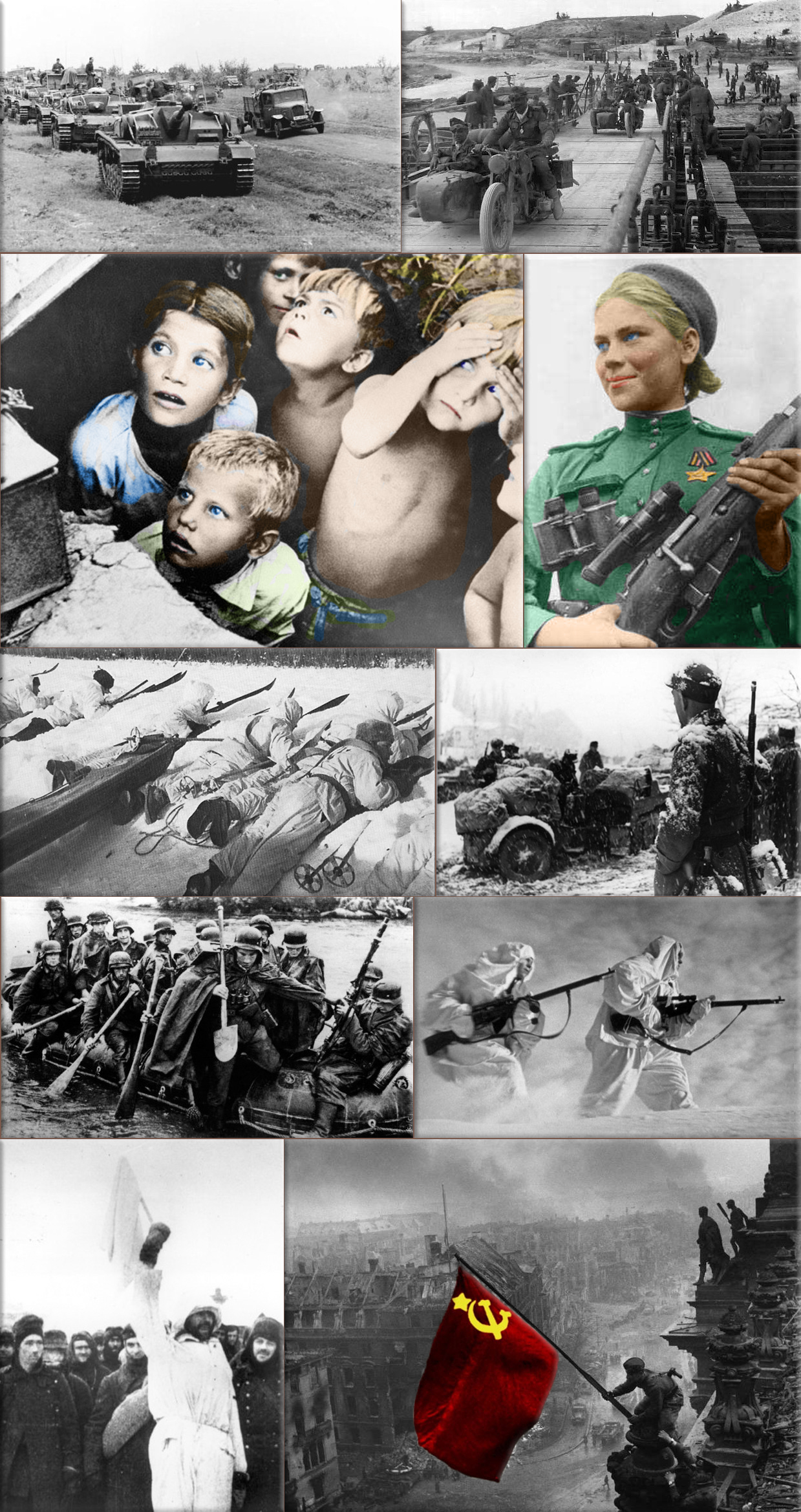
Pre World War II:
1933 - Frances Perkins becomes United States Secretary of Labor, the first female member of the United States Cabinet.
World War II:
1941 - United Kingdom launches Operation Claymore on the Lofoten Islands.
1943 - Battle of the Bismarck Sea; in the South West Pacific comes to an end.
1944 - Bombing of Berlin; After the success of Big Week the United States Army Air Forces begins a daylight bombing campaign of Berlin.
1945 - Lapland War; Finland declares war on Nazi Germany.
Wikipedia Photo: Bombing of Dresden in World War II; August Schreitmüller's sculpture 'Goodness' surveys Dresden after a firestorm started by Allied bombers in 1945.
USS Bunker Hill was hit by kamikazes piloted by Ensign Kiyoshi Ogawa and another airman on 11 May 1945. 389 personnel were killed or missing from a crew of 2,600; Ensign Kiyoshi Ogawa, who flew his aircraft into the USS Bunker Hill during a Kamikaze mission on 11 May 1945; Kamikaze Missions - Lt Yoshinori Yamaguchi's Yokosuka D4Y3 (Type 33 Suisei) "Judy" in a suicide dive against USS Essex. The dive brakes are extended and the non-self-sealing port wing tank is trailing fuel vapor and/or smoke 25 November 1944.
German V1 flying-bomb and V2 Rockets - Preparations for a Salvo Launch of V-2 Rockets in the Heidelager near Blizna (Poland) (1944), credit German History in Documents and Images GHDI.
Eastern Front (World War II); Germans race towards Stalingrad. August 1942; Soviet children during a German air raid in the first days of the war, June 1941, by RIA Novosti archive; Soviet sniper Roza Shanina in 1944. About 400,000 Soviet women served in front-line duty units Caucasus Mountains, winter 1942/43; Finnish ski patrol: the invisible enemy of the Soviet Army with an unlimited supply of skis; Men of the German Engineers Corps cross a river which is swollen after the first autumn rains, to strengthen bridges linking the German positions on the central front in Russia. by Keystone / Getty Images. October 1942; Russian snipers fighting on the Leningrad front during a blizzard. Photo by Hulton Archive / Getty Images, 1943; German soldiers surrendering to the Russians in Stalingrad, the soldier holding the white flag of surrender is dressed in white so that there could be no doubt of his intentions, a Russian soldier is on the right of the photograph. by Keystone / Getty Images, January 1943.
March 4th, 1957

The S & P 500 stock market index is introduced, replacing the S & P 90.
Wikipedia Photo: The New York Stock Exchange floor, credit Associated Press; and fisheye view, credit © Geoff Sills, © Eric L Bowers.
March 4th, 1960

Aviation accidents and incidents:
1960 - The French freighter La Coubre explodes in Havana, Cuba killing 100.
1966 - A Canadian Pacific Air Lines DC-8 43 explodes on landing at Tokyo International Airport killing 64 people.
Wikipedia Photo: ● Pan AM 747 ● U.S. Airways flight 1549 also known as the "Miracle on the Hudson" navigates an exit ramp near Burlington, New Jersey, June 5, 2011 ● Passengers stand on the wings of a U.S. Airways plane as a ferry pulls up to it after it landed in the Hudson River in New York, Reuters ● US Airways plane crashes into New York Hudson River, Photo: AP
March 4th, 2001

2001 - March 4th, 2001 BBC bombing: a massive car bomb explodes in front of the BBC Television Centre in London. The attack was attributed to the Real IRA.
Wikipedia Photo: Irish Republican Army; Belfast, Northern Ireland.
March 4th, 2002
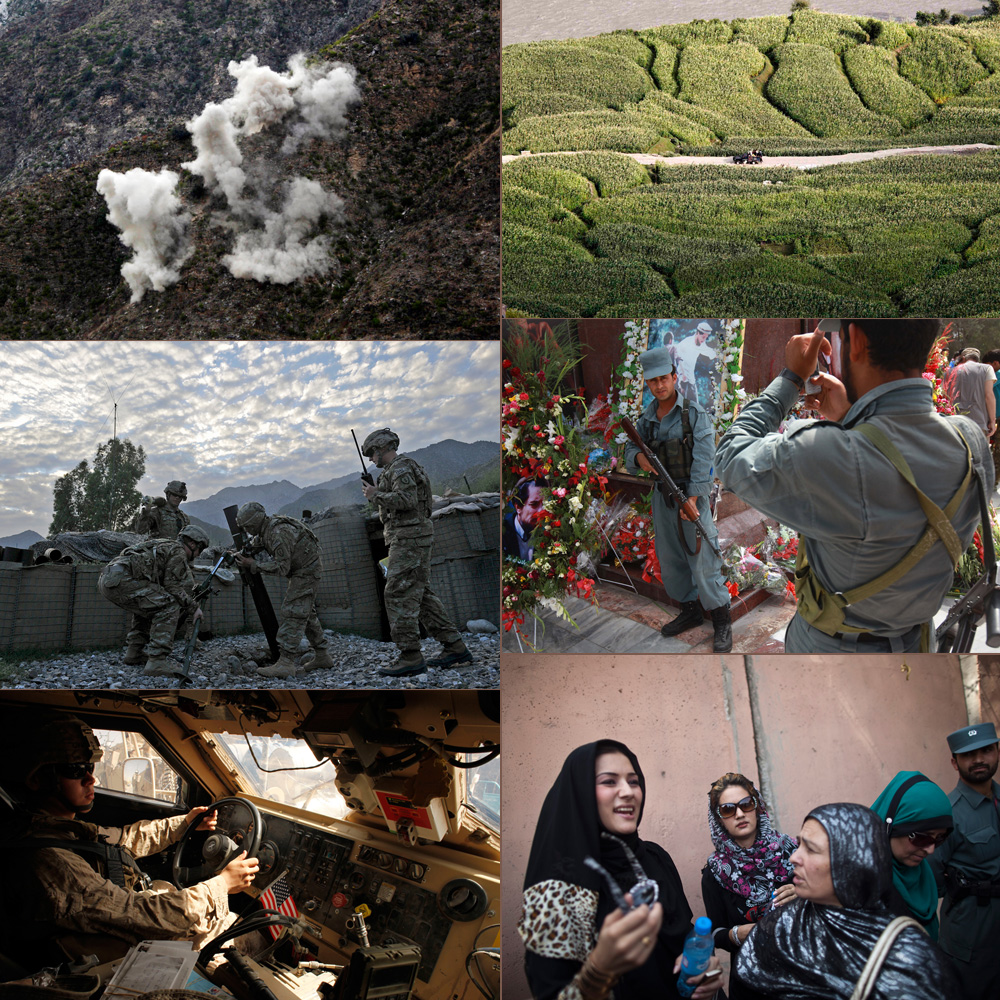
War in Afghanistan: Battle of Takur Ghar; Seven American Special Operations Forces soldiers are killed as they attempt to infiltrate the Shahi Kot Valley on a low-flying helicopter reconnaissance mission.
Wikipedia Photo: Afghanistan, Boston Globe, The Big Picture.
March 3rd, 2015

Modern conflicts in the Middle East, social unrest and terrorist attacks:
2015 - Zasyadko mine disaster; Following the start of the War in Donbass, at least 34 miners die in a suspected gas explosion at the Zasyadko coal mine in the rebel-held Donetsk region of Ukraine.
2012 - Brazzaville arms dump blasts; A series of explosions is reported at a munitions dump in Brazzaville, the capital of the Republic of the Congo, killing at least 250 people.
Wikipedia Photo: Middle East satellite image, NASA. ● Camels are seen early morning on a beach in the Marina area of Dubai October 16, 2008. (Steve Crisp, Reuters) ● A portrait of Syrian President Bashar al-Assad burns during clashes between rebels and Syrian troops in Selehattin, near Aleppo, on July 23, 2012. (Bulent Kilic, AFP / GettyImages) ● Egyptians gather in their thousands in Tahrir Square to mark the one year anniversary of the revolution on Jan. 25, 2012 in Cairo Egypt. Tens of thousands have gathered in the square on the first anniversary of the Arab uprising which toppled President Hosni Mubarak. (Jeff J Mitchell, Getty Images) ● Black smoke rises above the Tehran skyline as supporters of Mir Hossein Mousavi burn tires and other material in the streets as they fight running battles with police to protest the declared results of the Iranian presidential election in Tehran, Iran, Saturday, June 13, 2009. (Ben Curtis, AP) ● The Iron Dome defense system fires to interecpt incoming missiles from Gaza in the port town of Ashdod, Thursday, Nov. 15, 2012. (Tsafrir Abayov, AP)
